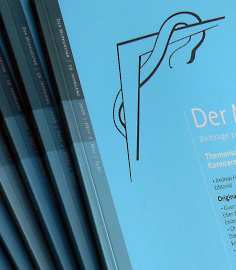
HEFT 3/2023
Der Merkurstab | Mai/Juni 2023 | 18,00 Euro (inkl. Mwst., zzgl. Versandkosten)

| Artikel | Die „umgekehrte Pflanze“ im Menschen – Kommentar zu Rudolf Steiners Darstellung im ersten Ärztekurs (GA 312) The “inverted plant” in human organisation – Commentary on Rudolf Steiner’s description in the first medical course (GA 312) |
| Autoren | Peter Heusser, Michael Kalisch, Hartmut Ramm, et al. |
| Seiten | 168-176 |
| Volume | 76 |
Zusammenfassung
Der dreigliedrige Mensch entspricht nach Rudolf
Steiner einer „umgekehrten Pflanze“, wobei das
Nerven-Sinnes-System der Wurzel, das rhythmische
System dem Stängel-Blatt-Bereich und die Stoffwechsel-Fortpflanzungsorganisation dem Blüten-Frucht-Samenbereich der Pflanze entspricht. Diese Gegebenheit
ist für die anthroposophisch orientierte Pflanzenheilkunde, Pharmazie und therapeutische Praxis
von grundlegender Bedeutung. Wir stellen hier die
Bearbeitung dieses Themas im neuen, 3. Band der
Studienkommentare zu Geisteswissenschaft und
Medizin (GA 312) als Leseprobe vor. Sie erläutert das
Konzept der „umgekehrten Pflanze“ im Kontext von
Steiners Gesamtwerk, der Wissenschaftsgeschichte
(Platon, Aristoteles, Darwin) und der modernen botanischen Forschung, die das Konzept vollauf bestätigt:
Mensch und Pflanze sind polar orientiert, die Wurzel
entspricht funktionell dem Nerven-Sinnes-System und
dient der Pflanzenkognition. Wird diese Kognition als
geistig-seelische Fähigkeit anerkannt, ergeben sich
auch Bezüge zu Steiners Ausführungen zum Geist bei
Pflanze, Tier und Mensch: Deren unterschiedliche Bewusstheit
und kosmische Lokalisation sind der Grund
für die halb oder ganz „umgekehrte Pflanze“ in Tier
bzw. Mensch.
Abstract
According to Rudolf Steiner the functional threefolding
of the human being represents an “inverted plant”,
whereby the sense-nerve-system corresponds to the
roots, the rhythmic system to the stem-leaf-organs,
and the metabolic and reproductive system to the
blossom-fruit-seed-organs of the plant. This fact is
of fundamental importance for anthroposophic
science of healing plants, pharmaceutics and
medicine. Here we present the elaboration of this
topic in the new, 3rd volume of commentaries on
Introducing Anthroposophical Medicine (CW 312) as
a reading sample. It elucidates the concept of the
“inverted plant” in the context of Rudolf Steiner’s
Complete Works, the history of science (Plato, Aristotle,
Darwin), and modern botanical research, which verifies
the concept fully: humans and plants have a polar
orientation, the root is a functional analogue of the
sense-nerve-system and an organ of plant cognition.
Moreover, when cognition is acknowledged as a soulspiritual
capability, relations become apparent to
Steiner’s statements concerning the spirits of plants,
animals and the human being. Thus, the different
forms of consciousness and cosmic localisations of
these spirits are the reason for the half-way or fully
“inverted plant” in animals respectively humans.
